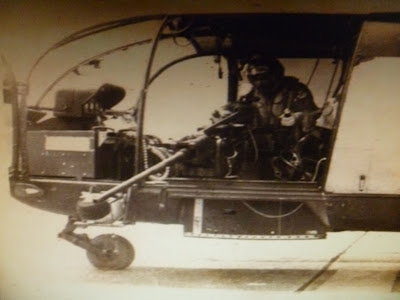There are two types of gunship's targets:
- Training Targets.
- Operational Targets.
Training Targets: West Malaysia's enhancement training targets located at Song-Song island catered for the live firing practices by the RMAF fighter aircrafts and the AlouetteIII gunships.
Operational Targets:
- Sighted Target - are visible and confirmed targets, such as from an open ground.
- Non-Sighted Target - are non visible targets, such as thick jungle canopy where ground surfaces are covered by shrubs and trees.
The operational gunship's mission along the Thai / Malaysian borders are mostly of a "Non-Sighted Target". This was due to the thick tropical jungle conopy bestowed. The firing power for this type of target required clear-cut informations from the troops on the ground regarding of their own friendly troop's position and the enemy whereabout. This was done during the pre-take off "brief" for the gunship's pilots/gunners and the Nuri pilots by the Commanding Officer(CO) or BASO(Brigade Air Support Officer) and the intelligence officer(IO) involved. Immediately after the "brief" or briefing the gunship airborned for the intended firing of the enemy location. After the gunship's firing and securing the areas, then only will make ways for the Nuri helicopters to move in for safer logistic resupplying(Resup), troop's move or change over.
The recurring sorties of the Nuri helicopters flown to the same intended location the more likely for the enemy to retaliate. Therefore the AlouetteIII gunships has to keep "watch" from the air and counter firing may be necessarily carried out on orders from the ground control commanders. In hot areas, as much as several Nuris and two gunships escort helicopters be employed for one given tasking, and definitely would be an hectic and life-gambled day to accomplish the mission.
Troop Move Sibu, Sarawak 1983.
The recurring sorties of the Nuri helicopters flown to the same intended location the more likely for the enemy to retaliate. Therefore the AlouetteIII gunships has to keep "watch" from the air and counter firing may be necessarily carried out on orders from the ground control commanders. In hot areas, as much as several Nuris and two gunships escort helicopters be employed for one given tasking, and definitely would be an hectic and life-gambled day to accomplish the mission.























